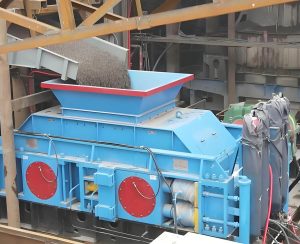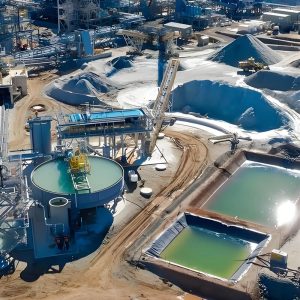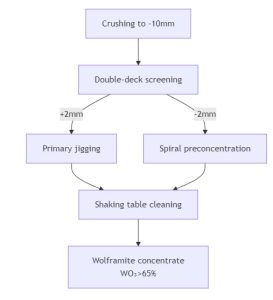Hidden beneath its unassuming appearance lies the lifeblood of modern technology—quartz sand (SiO₂). Once merely the raw material for glass and ceramics, it has undergone a metamorphosis into one of the most strategically critical substances of the 21st century. Through advanced purification techniques, quartz sand transcends its humble origins, emerging as the foundational element in semiconductors, photovoltaics, fiber optics, and aerospace engineering.
The journey from ordinary sand to ultra-high-purity silicon—ranging from 99.9% (3N) to 99.9999999% (9N)—represents one of the most demanding feats in materials science. Each additional “nine” (indicating purity) unlocks new frontiers in technology while multiplying both complexity and value. Semiconductor chips, solar panels, and high-speed optical cables all depend on this purity revolution—a silent but pivotal advancement fueling humanity’s digital and green transformation.
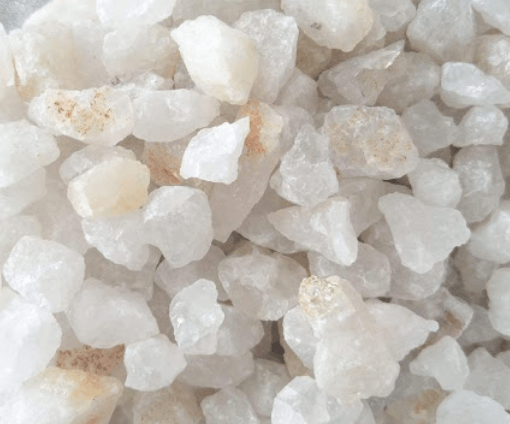
This article explores why quartz sand is irreplaceable in high-tech industries and how cutting-edge purification technologies refine it into the “supreme-grade” material powering our future.
Why Quartz Sand is Irreplaceable in High-Tech Industries?
Quartz sand (SiO₂) is the bedrock of modern technology—an elemental ingredient whose purity dictates performance across semiconductors, photovoltaics, optics, and aerospace. Despite extensive research into alternative materials, it remains practically irreplaceable for three fundamental reasons:
1. Unique Physicochemical Properties
(1) Near-Perfect Silicon Structure
- Semiconductor Necessity: Silicon (derived from SiO₂) dominates chip manufacturing due to its ideal bandgap (1.1 eV), enabling precise electron control unmatched by alternatives like GaAs or SiC for mainstream logic chips.
- Thermal Stability: Quartz-based components (e.g., CVD reactors, crucibles) withstand temperatures of 1,600 °C or higher without deformation, which is critical for silicon crystal growth (Czochralski process).
(2) Optical Transparency
- Ultrapure quartz (>99.999%) is transparent to UV-Visible-IR spectra, enabling:
- Fiber Optics: Signal loss <0.2 dB/km (Corning’s ultra-low-loss fibers).
- EUV Lithography: Quartz lenses must exhibit zero bubbles/inclusions to prevent laser scattering (ASML’s optics demand 8N purity).
(3) Dielectric & Mechanical Resilience
- Low Thermal Expansion: Near-zero CTE (5×10⁻⁷/°C) ensures stability in satellite gyroscopes and space telescope mirrors (Hubble, James Webb).
- High Dielectric Strength: SiO₂ layers in transistors insulate gates at atomic-scale thinness (~1 nm)—a feat unreplicable by organic/polymeric materials.
2. Economic & Scalability Imperatives
(1) Supply Chain Maturity
- Silicon accounts for 95% of semiconductor substrates(vs. 5% for Ge/GaN/SiC) due to:
- Abundance: SiO₂ constitutes 59% of Earth’s crust—vs. rare/conflict minerals like cobalt.
- Decades of Infrastructure: Global purification facilities (e.g., Wacker, Tokuyama) process millions of tons/year at declining costs (Moore’s Law for silicon).
(2) Cost-Performance Lock-In
- While SiC/GaN excel in high-power and high-frequency applications (5G, EVs), their cost is 5–10 times higher than silicon per wafer. Quartz-sourced Si remains unbeatable for:
- Consumer Electronics: A single iPhone’s A17 Pro chip requires 3g of 6N quartz-derived silicon.
- Solar Panels: Polysilicon from quartz drives 97% of PV modules, costing just **0.25/W∗∗(vs.. 0.25/W** (vs. 0.25/W∗∗(vs.1.50/W for perovskite prototypes).
3. Technological “Purity Ceiling”
(1) No Viable Substitute Beyond Silicon
- Quantum Computing: Spin qubits require isotopically purified ²⁸Si (99.99%)—no other material hosts such stable quantum coherence (Intel, IBM benchmarks).
- 3D Chip Stacking: SiO₂-based interposersenable die-to-die communication with <1μm alignment tolerance—organic alternatives induce signal crosstalk.
(2) The “9N Standard” Bottleneck
Even nanomaterials (e.g., graphene, nanotubes) fail to match ultrapure quartz’s defect density control:
- Semiconductor Wafers: Require <0.1 defects/cm²—achievable only with 6N+ quartz.
- Lab-Grown Crystals(e.g., synthetics like cubic zirconia) introduce 10× more impurities than natural quartz under equivalent processing.
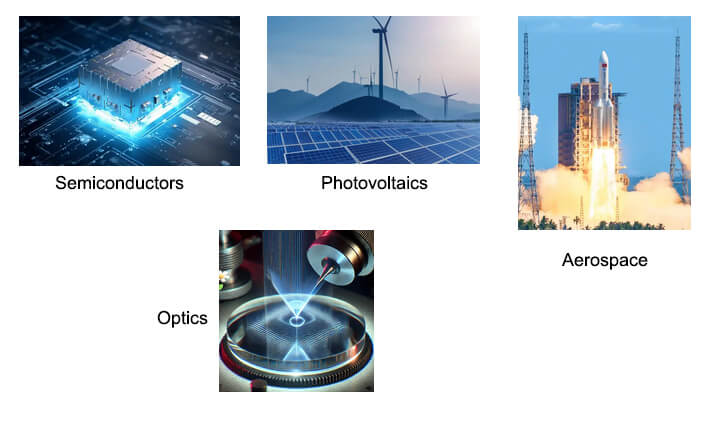
From smartphones to Mars rovers, quartz sand’s irreplaceability stems from nature’s fortuitous design: an optimal blend of electronic, thermal, and mechanical properties—enhanced by human ingenuity in purification. Until breakthroughs in quantum materials or self-assembling substrates emerge, SiO₂ will remain the unshakable foundation of high-tech progress.
How to Refine Quartz Sand?
Natural quartz sand often contains a variety of impurities, which are key bottlenecks restricting its application. Major harmful impurities include:
- Coloring oxides: Oxides such as iron (Fe), titanium (Ti), and chromium (Cr) can color quartz sand and affect its optical transparency, making them strictly restricted in applications such as glass and optical fiber. Iron content is one of the most critical indicators of quartz sand quality. Photovoltaic-grade quartz sand requires an Fe₂O₃ content below 10 ppm, while semiconductor-grade quartz sand requires less than 1 ppm.
- Alkali and alkaline earth metals: Sodium (Na), potassium (K), calcium (Ca), and magnesium (Mg) can lower the softening point and high-temperature stability of quartz glass, significantly impacting the electrical properties of semiconductor materials.
- Other metallic impurities: Although typically present in lower concentrations, such as aluminum (Al), boron (B), and phosphorus (P), they are also strictly restricted in certain high-end applications, such as semiconductor substrate materials.
- Inclusions and gas- and liquid-phase impurities: Quartz crystals may contain tiny fluid inclusions, bubbles, or solid-phase inclusions (such as zircon and rutile). These impurities are difficult to remove through conventional surface cleaning.
Therefore, the core task of quartz sand purification is to accurately and efficiently remove these harmful impurities to meet the stringent requirements of various high-tech fields. Quartz sand purification mainly removes impurities through physical methods, chemical methods, and combined processes. Key technologies include gravity separation, magnetic separation, flotation, and acid leaching processes. The demand for high purity in the photovoltaic semiconductor field drives technological upgrades.
Physical Purification of Quartz Sand
Physical purification of quartz sand involves removing impurities through mechanical methods, primarily including washing, desliming, grading, magnetic separation, and flotation. These processes are suitable for the initial purification stage.
Washing and Desliming
Removes clay, silt, and film-like impurities from quartz particle surfaces using mechanical or hydraulic force. For instance, intensive processing using high-intensity scrubbers or rod mills can reduce Fe₂O₃ content by approximately 10% to 30%.
Magnetic Separation
Separates impurities based on magnetic susceptibility, primarily removing weakly magnetic minerals like hematite and limonite. Common equipment includes drum magnetic separators and high-gradient magnetic separators, requiring multiple passes to ensure thorough impurity removal.
Flotation
Separates quartz from non-magnetic impurities like feldspar and mica using reagents. Fluorine-free flotation employs mixed cationic and anionic collectors, gradually replacing traditional fluorine-based methods to reduce pollution.
Classification and Dewatering
Wash classification equipment separates quartz sand by particle size. Smaller particles contain higher impurity levels, necessitating combined desliming and scrubbing processes to enhance purity.
The physical method offers advantages of low energy consumption and zero pollution, but its effectiveness in removing inclusions is limited. It is typically employed as a pretreatment stage before chemical purification.
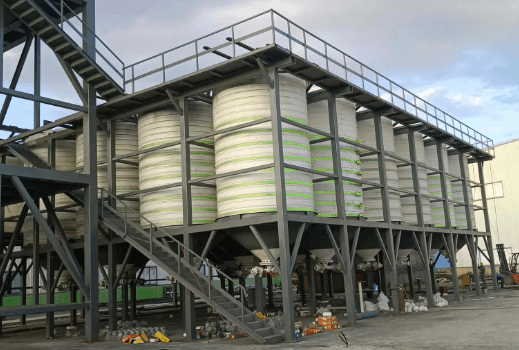
Chemical Purification of Quartz Sand
The chemical purification of quartz sand is the core process in producing high-purity quartz sand. It primarily removes impurities through acid leaching and high-temperature treatment, achieving products with a purity exceeding 99.9%.
Mainstream Chemical Purification Technologies
Acid Leaching Treatment
A mixture of acids, including hydrofluoric acid, hydrochloric acid, and sulfuric acid, is used. The sand reacts at 70-90°C for 4-8 hours to remove impurities such as iron oxides and aluminosilicates. For example, a photovoltaic sand manufacturer can reduce Al₂O₃ content from 0.35% to 0.02% through combined chemical treatment.
High-Temperature Chlorination
Feeds chlorine gas or hydrogen chloride at 1200-1500°C to volatilize impurities like Fe and Ti as volatile chlorides. Suitable for producing high-purity quartz sand exceeding 6N grade.
Key Process Parameters
- Temperature: Acid leaching typically requires 70-90°C; high-temperature chlorination demands temperatures above 1200°
- Acid Concentration: Hydrochloric acid at 10%-20% concentration; hydrofluoric acid and sulfuric acid mixed at a 3:13 ratio.
- Reaction Time: Acid leaching requires 4-8 hours; high-temperature chlorination must continue for several hours until impurities are completely volatilized.
Quartz Sand Comprehensive Purification
In actual production, the production of high-purity quartz sand often utilizes a combination of physical and chemical purification methods, resulting in a complex and sophisticated process. A typical purification process is as follows, with some steps being optional depending on production requirements:
Ore → Crushing → Screening → Desliming by Scrubbing → Magnetic Separation (Weak Magnetic Separation → Strong Magnetic Separation → High Gradient Magnetic Separation) → Flotation (Optional) → Acid Leaching (HCl/H₂SO₄ → HF/HCl) → Cleaning → Dehydration → Drying → Chlorination Roasting (Optional) → Secondary Acid Leaching (Optional) → Cleaning → Finished Product
Quartz Sand: The Unseen Pillar of Technological Sovereignty
The story of quartz sand epitomizes the alchemy of modern science—transforming an abundant natural resource into the cornerstone of innovation. Its role stretches from silicon wafers inside every AI chip to the photovoltaic cells driving renewable energy, reflecting a symbiosis of purity and performance.
Yet, amid this technological triumph, challenges persist. The race for ultra-high-purity quartz remains fiercely competitive, with geopolitical implications touching supply chains and semiconductor autonomy. Nations and corporations alike must invest not just in extraction and purification, but in next-generation refining techniques—plasma separation, AI-driven impurity mapping, and isotope engineering—to stay ahead.
As the demand for faster, smaller, and greener technology accelerates, quartz sand’s significance will only amplify. Those who master its purification will hold the keys to the silicon-based future, where even the smallest impurity defines the boundary between breakthrough and bottleneck.
In essence: No ultra-pure sand, no advanced tech. The next chapter of the digital age is being written—one grain at a time.

